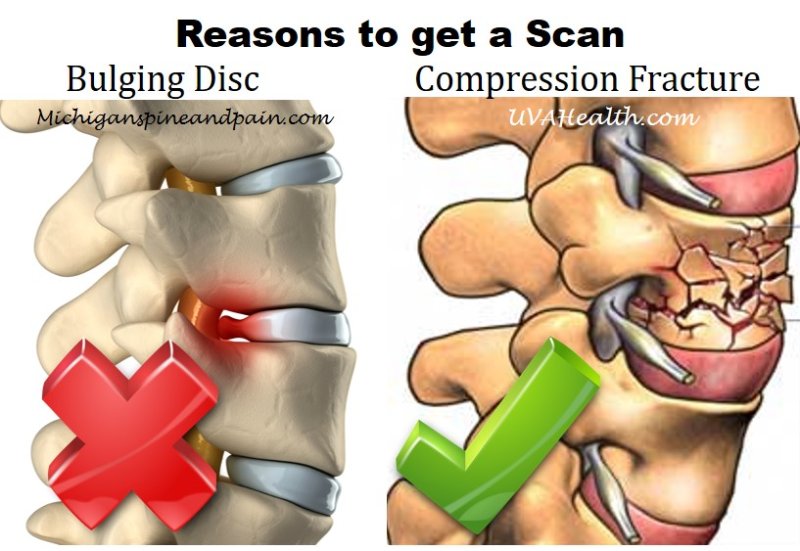Do You Need A Scan On Your Injured Back?
Many people feel the need for a scan when they’re injured. Scans are useful for seeing tears and “facet joint syndrome” and bulging discs. Many of these findings can be old injuries that are no longer painful but the damage is still visible on scan results. In fact, many studies have shown experienced clinicians cannot tell from an x-ray which spine segments are painful and which are pain-free. The same is true with shoulder and hip injuries, when we scan pain free people many of them have tears.
“Many imaging-based degenerative features are likely part of normal ageing and unassociated with pain.” Dr. Brinjiki
The best way to think of this is that degeneration is like getting grey hairs and wrinkles it’s a normal part of the aging process.
What the scan doesn’t provide is a history of your symptoms, how the injury happened, the type or quality of pain, your ranges of motion, muscle strength, muscle stiffness, muscle imbalances or faulty movement mechanics or even slackness in joints.
A skilled clinician can get masses of information on your injury and functional ability without a scan. Frequently we have patients who have been a GP and sent for an MRI and the results come back clear but they are in a lot of pain. Laying in an MRI tube might not give any indication as to what is causing your pain, yet something as simple as your standing posture might give us a massive clue straight away.
So not everyone needs an X-ray, MRI or CT scan because the scan might not be of any use. If we think a scan would be helpful or if there are signs of condition that would benefit from further investigation we will refer you with our recommendation for a scan. It’s important to remember that not everyone needs a scan.
REFERENCES:
Register et al (2012) Prevalence of abnormal hip findings in asymptomatic participants: a prospective, blinded study. American Journal of Sports Medicine 40(12): 2720-4
Deyo et al. (2001) Lower back pain review. N Engl J Med 344:363-370
Schmitz et al (2012) Identification of acetabular labral pathological changes in asymptomatic volunteers using optimized, noncontrast 1.5-T magnetic resonance imaging. American Journal of Sports Medicine 40(6): 1337-41
Gallo et al (2014) Asymptomatic hip/groin pathology identified on magnetic resonance imaging of professional hockey players: outcomes and playing status at 4 years’ follow-up. Arthroscopy 30(10): 1222-8
Boden et al (1990) Abnormal magnetic-resonance scans of the lumbar spine in asymptomatic subjects. Journal of Bone and Joint Surgery Am 72(3): 403-8
Moosmayer et al (2009) Prevalence and characteristics of asymptomatic tears of the rotator cuff: an ultrasonographic and clinical study. Journal of Bone and Joint Surgery Br 91(2): 196-200
Brinjikji et al. Systematic Literature Review of Imaging Features of Spinal Degeneration in Asymptomatic Populations. AJNR Am J Neuroradiol. 2014. PubMed #25430861.


Recent Comments